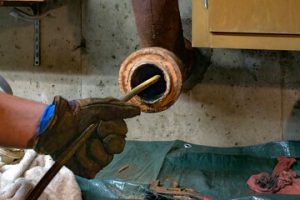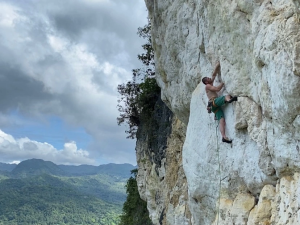Plumbers are responsible for installing, repairing and maintaining the pipes that deliver water and remove waste from homes and businesses. They must understand how these systems work and be able to spot problems like leaks, clogs, and damaged fixtures. Contact Plumbers Bradenton for professional help.

Residential plumbers focus on plumbing systems in houses and apartments. Commercial plumbers work on larger systems in places like schools, hospitals, and shopping centers.
Sewer and drain systems are crucial to residential, commercial, and industrial environments. When these critical lines become damaged or clogged, it can cause serious problems for the surrounding property and residents. Plumbers who specialize in sewer repair use advanced techniques to diagnose and resolve issues with sewage pipes.
To assess the condition of a sewer line, plumbing professionals often utilize sewer camera inspections. These tools allow them to see inside the pipes, identifying problems like cracks, misalignments, or obstructions. Once they have a clear understanding of the problem, they can recommend the best course of action.
Spot repairs are a common method for addressing issues with a single section of a sewer line. These methods are also known as trenchless or no-dig technologies, and they save time and money by avoiding the need for extensive excavation.
When a portion of a sewer pipe is in need of replacement, the plumber can use a process called relining to install a new line without digging a trench. This method involves inserting a tube that is covered in resin into the existing pipe. Once the resin hardens, it forms a new pipe within the old one, effectively fixing the leak or blockage.
Traditional excavation methods are still sometimes necessary, especially when the extent of damage requires a full replacement of the damaged pipe. This technique is typically used when the pipes are older and made of materials that are prone to corrosion, such as cast iron or clay.
Regular maintenance and inspections are the best ways to ensure that your sewer system remains in good condition. Having a plumber perform periodic sewer inspections can help to prevent costly repairs and extend the life of your pipes. When the time comes to replace your sewer pipe, it’s important to work with a professional who has the proper equipment and experience to complete the task correctly. A certified plumber can ensure that your new sewer line is installed properly, safely, and with minimal disruption to your home or business.
Sewer Cleaning
Clogged sewer lines can cause wastewater to back up into homes and businesses, creating a health hazard and resulting in smelly, messy problems. Regular sewer line cleaning can prevent blockages and other issues, including expensive repairs.
Although it might seem like a task you could take care of on your own, hiring a professional plumber is the best way to ensure your sewer drains are cleaned properly. These professionals have the right tools and training to get the job done quickly and efficiently. Plumbers often use high-pressure water to clean out sewer lines, which is more effective than traditional drain cleaners and safer for the environment.
Before beginning the sewer cleaning process, the plumber will locate the source of the blockage using CCTV equipment. They will then determine whether the blockage is caused by a structural issue or an obstruction caused by roots. Once they have identified the cause of the blockage, they will decide on the best course of action.
There are several different methods for sewer cleaning, including hydro jetting and cable (snake) cleaning. The plumber may also choose to chemically clean the pipes. This method involves pouring a solution into the pipe that contains alkaline and acids, which breaks down the waste and dislodges it from the line. It is important to note that this method can be dangerous if not used correctly, and it should only be performed by a licensed plumber.
A sewer system can be easily damaged by tree roots, so it is important to have it regularly inspected and maintained. A plumber can perform a number of services to keep the line in good condition, including replacing root barriers, patching leaks, and repairing broken sections. They can also install new fixtures and appliances, such as toilets, showers, and waste disposal units.
Although it might be tempting to use commercial products like chemical drain cleaners, it is important to avoid these at all costs. These chemicals are not only harmful to the environment, but they can also damage your plumbing pipes over time. Regular maintenance and professional inspections can help keep your sewer system running smoothly, preventing clogs, overflows, and other costly issues.
Sewer Replacement
The sewer pipe responsible for funneling waste from your home to the city’s main line can get damaged or clogged. This is one of the main reasons for a homeowner to seek professional plumbing services. The repair or replacement of the sewer pipe can take time and may disrupt your daily routine. This is why it is important to understand the timeline for this process. You should also plan for alternative accommodations or schedules if needed to minimize inconveniences.
A well-maintained sewer system is essential to the health and safety of a family. Damaged or malfunctioning sewer lines can lead to sewage buildup, dangerous gases, and even mold and sewer bugs. The best way to avoid these issues is to have your sewer line regularly checked and repaired by a licensed plumber.
If your toilets and drains are getting clogged frequently, you may need to have the sewer line replaced. The lifespan of your sewer line depends on the material it is made of and how often you have it maintained. Clay pipes tend to last longer than cast iron or steel, but all pipes eventually wear out. Regular maintenance can extend their lifespan, but your local plumber can advise you on the best long-term solution for your home’s specific needs.
A plumber who specializes in sewer repairs and replacements can offer advice on your options for the most cost-effective and efficient solution. A quality plumber will have the tools and knowledge to perform a seamless repiping process, while following all regulatory guidelines.
When choosing a plumbing service to perform sewer repair or replacement, it is crucial that you look for a licensed professional with a good reputation. An experienced plumber will be able to answer all your questions, provide you with a detailed estimate for the work, and complete the job in a timely manner.
Some homeowners attempt DIY repair or replacement of their sewer lines, but this can be a risky and costly mistake. Not only are mistakes difficult to fix, but improper installation can cause leaks and faulty connections that result in further damage and expensive repairs down the road. Moreover, most local municipalities require that homeowners obtain a permit before starting any work on their sewer lines. A reputable plumbing contractor will be familiar with all local codes and regulations, and will help you navigate the permit process.
Drain Cleaning
Drains are small in size but have a huge impact on your home’s hygiene and functionality. When they’re not properly cared for, clogs and slow draining can occur. Clogged drains can also lead to flooding, bacteria growth, and other costly issues that call for professional attention. To prevent these problems, you need to regularly clean your drains.
Professional plumbers offer a variety of drain cleaning services to ensure your pipes are always clear of obstructions and water flows freely. They may use various tools and techniques, such as snaking or hydro-jetting, to remove stubborn clogs. Besides clearing out drains, professional plumbers may also inspect your pipes to identify any issues and recommend repairs.
Clogged drains can be frustrating and embarrassing for homeowners, especially when they appear in the kitchen or bathroom. You can help avoid these problems by being mindful of what you put down your drains and using a strainer or drain cover to catch hair, food, and other items. It’s also a good idea to have your drains professionally cleaned at least once every two years.
A clogged drain can be a sign of serious issues with your plumbing system. If left unattended, the clog can cause severe damage and affect the entire plumbing system. Clogged drains can also lead to water and waste backups, which can damage your property, create hazardous mold, mildew, and bacterial build-up, and cause unpleasant odors.
If you notice that your drains are getting slower than usual or have a smelly sewage smell, it’s time to contact your local plumber for professional drain cleaning services. The team at Cellino Plumbing, Heating & Cooling can help you schedule regular drain cleaning services to keep your home’s plumbing in top shape.
Drain cleaning is an essential service that many people overlook. When done properly, it can improve the functionality of your plumbing system and extend its lifespan. While some homeowners may opt for DIY drain cleaning products that contain caustic chemicals, it’s best to leave this job to professional plumbers. These professionals can safely and effectively remove clogs without damaging your pipes. They can even use a camera to inspect the condition of your pipe and determine the root cause of the clog.
